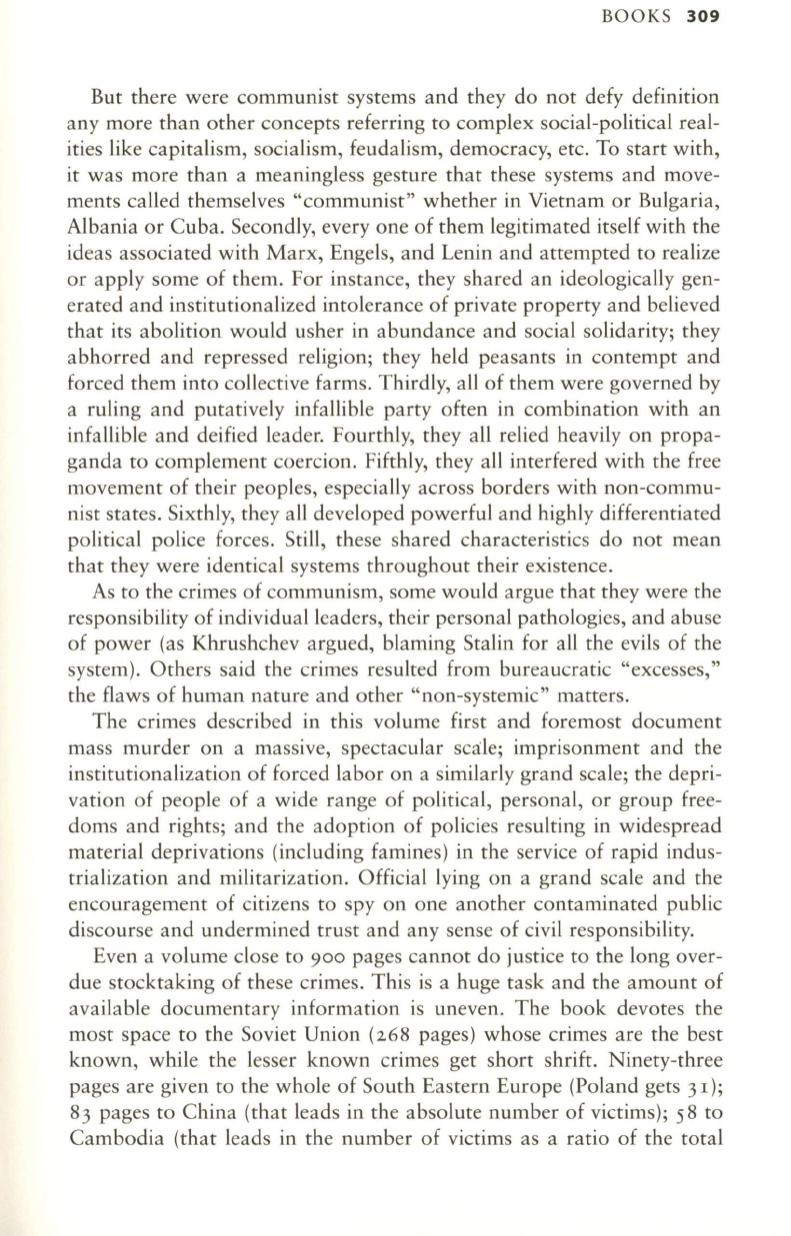
BOOKS
309
But there were communist systems and they do not defy definition
any more than other concepts referring to complex social-political real–
ities like capitalism, socialism, feudalism, democracy, etc. To start with,
it was more than a meaningless gesture that these systems and move–
ments called themselves "communist" whether in Vietnam or Bulgaria,
Albania or Cuba . Secondly, everyone of them legitimated itself with the
ideas associated with Marx, Engels, and Lenin and attempted to realize
or apply some of them. For instance, they shared an ideologically gen–
erated and institutionalized intolerance of private property and believed
that its abolition would usher in abundance and social solidarity; they
abhorred and repressed religion; they held peasants in contempt and
forced them into collective farms. Thirdly, all of them were governed by
a ruling and putatively infallible party often in combination with an
infallible and deified leader. Fourthly, they all relied heavily on propa–
ganda to complement coercion. Fifthly, they all interfered with the free
movement of their peoples, especially across borders with non-commu–
nist states. Sixthly, they all developed powerful and highly differentiated
political police forces. Still, these shared characteristics do not mean
that they were identical systems throughout their existence.
As to the crimes of communism, some would argue that they were the
responsibility of individual leaders, their personal pathologies, and abuse
of power {as Khrushchev argued, blaming Stalin for all the evils of the
system} . Others said the crimes resulted from bureaucratic "excesses,"
the flaws of human nature and other "non-systemic" matters.
The crimes described in this volume first and foremost document
mass murder on a massive, spectacular scale; imprisonment and the
institutionalization of forced labor on a similarly grand scale; the depri–
vation of people of a wide range of political, personal, or group free–
doms and rights; and the adoption of policies resulting in widespread
material deprivations {including famines} in the service of rapid indus–
trialization and militarization. Official lying on a grand scale and the
encouragement of citizens to spy on one another contaminated public
discourse and undermined trust and any sense of civil responsibility.
Even a volume close to
900
pages cannot do justice to the long over–
due stocktaking of these crimes. This is a huge task and the amount of
available documentary information is uneven. The book devotes the
most space to the Soviet Union
{268
pages} whose crimes are the best
known, while the lesser known crimes get short shrift. Ninety-three
pages are given to the whole of South Eastern Europe {Poland gets 3
I};
83 pages to China {that leads in the absolute number of victims}; 58 to
Cambodia {that leads in the number of victims as a ratio of the total


